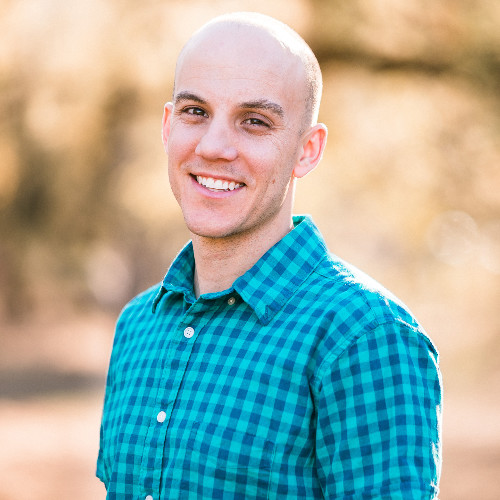It’s time to talk about the “human holdup” factor in the world of supply chain management. When it comes to building the best processes possible, we need to help procurement and factory operations teams get out of their own way.
The symptoms are fairly consistent industry-wide: siloed communication and mismatched priorities on what inventory actions are the most important for getting parts shipped out on time. Due in large part to the belief by different highly skilled people—the planner, the procurement buyer, etc.—that they are making the best possible decision, information and actions get out of sync with delays and other stresses piling up as a result.
The key to solving supply management problems isn’t taking the people out of the equation. Instead, it’s breaking down those silos and making sure the best data and communication is prioritized at an organizational level.
LeanDNA founder and CEO Richard Lebovitz said overconfidence or misplaced faith from the individual people who touch each point of the production and shipping process leads to shortages and inefficiencies that result in the much-talked-about bullwhip effect.
With so much key data living in numerous Excel spreadsheets that can’t talk to each other at a high level, issues can compound quickly. Teams end up relying on guesswork and outdated or inaccurate data to make critical inventory decisions.
“When you think about each role in production, from a planner that's trying to plan production to a buyer that's trying to secure the materials to supply, as you go through each tier of the supply chain there are relationships between all of them that are key,” Lebovitz said.
“We believe they're very siloed, and the information they get is theoretically the right information, but what’s holding them back is local prioritization and decision making. The way in which they manage their inventory and expedite orders are changing day to day, and, because they're all working in those silos, when things happen they have a lot of information but the day-to-day prioritization and synchronization is typically manual.”

Richard Lebovitz
Founder and CEO, LeanDNA
For decades, those human factors had less potential to create delays because products were less differentiated and more often created largely on one manufacturing site. With large volumes of standard products as the end result, the availability of plenty of safety stocks of parts was a benefit that could hide discrepancies caused by poor communication or decision making.
But as end products have become increasingly customized, and assembled from pieces made by a more globalized variety of suppliers, it’s necessary for ordering and storage processes to be much more streamlined and efficient in order to remain competitive.
“It just takes one part shortage to stop the line,” Lebovitz said. “Manufacturers are no longer making a simple black car or a standard washing machine. They have all sorts of options, so the combination of the supply chain has gotten a lot more complicated and a lot longer. They’ve gone from buying 1,000 different parts to now buying 5,000 parts.”
“Before, timing didn't really matter, because if I don't use a part today, I’ll use it tomorrow. But now if I need a part tomorrow, that's the only time I need it, or maybe I need this particular part three weeks from now for that one order. There’s a lot more coordination and synchronization required.”

Richard Lebovitz
Founder and CEO, LeanDNA
Adam Baker, a Manager of Customer Experience at LeanDNA, said long-held institutional knowledge around changes in ordering schedules or other supply chain factors may not be reflected in an ERP system due to human habits and never taking the time to change an ordering cycle that has changed.
Baker points out that if a system shows a supplier needs 100 days to deliver but that window has shortened to 30 days due to gradual manufacturing improvements by the supplier, flexibility is being lost on both ends.
“The system thinks it takes 100 days, so a lot of their planning tools may just spit out that it takes 100 days and we have to end up ordering everything 70 days sooner than we really need to, just because the buyer knows what reality is, but they haven't taken the time to update it,” he said.
“When they have so many homegrown reports, the buyer may ignore the 100 days because they know it's 30, but it creates a lot of misalignment in what is the actual picture. That trickles down to all the other things, and you have so much to clean up. It delays the time to getting the most value out of these tools and with homegrown stuff, and it waters down how effective that can be.”

Adam Baker
Manager of Customer Experience, LeanDNA
LeanDNA’s artificial intelligence solutions can quickly identify the handful of parts and decision-making processes that will make substantial improvements in meeting deadlines comfortably without relying on significant safeguard measures that tie up financial and physical resources.
Baker pointed to the improvements seen by a client in the aerospace industry that's buying processes become far more efficient because prioritized data and communications replaced manual reports that rely on lots of guesswork.
“They were kind of just taking a stab in the dark on all of the things that they need,” he said.
“What we’ve done helps their buyers team save the time in compiling and making those reports, but also has them going and chasing the right items. There’s an impact in buyer sanity for one, but also in buyer efficiency. Now they can schedule or plan more work because they're not doing, say, 50 percent of 10 projects. They're doing 100 percent of seven projects. All of a sudden they've got more space on the floor to build things or just more capacity to schedule things. It shows the power of what can happen when they get over that hurdle of bad data and tribal knowledge.”

Adam Baker
Manager of Customer Experience, LeanDNA
Ready to empower your factory operations teams and create a more dynamic supply chain?
Check out our guide "7 Considerations for Better Factory Management" to learn how teams can leverage their existing tools with technology that complements and strengthens them.






